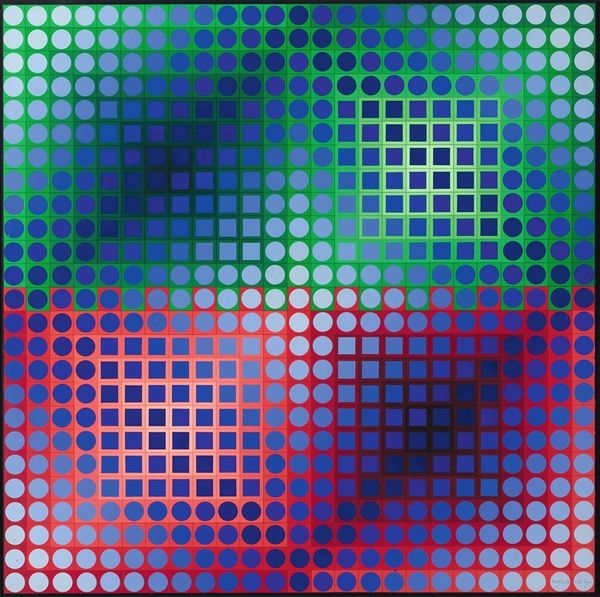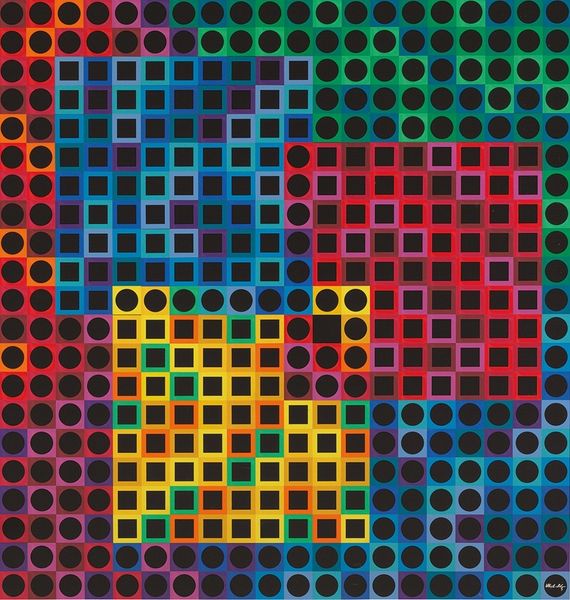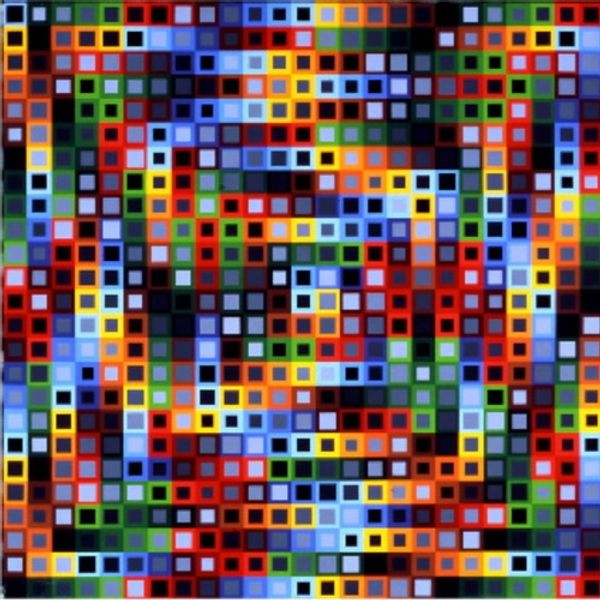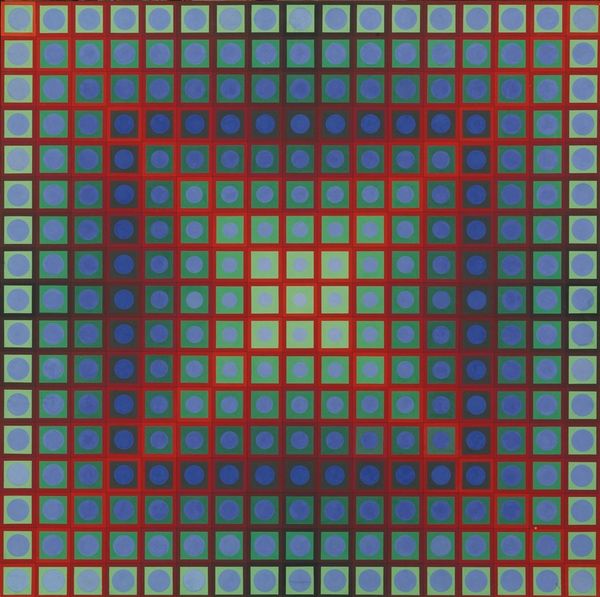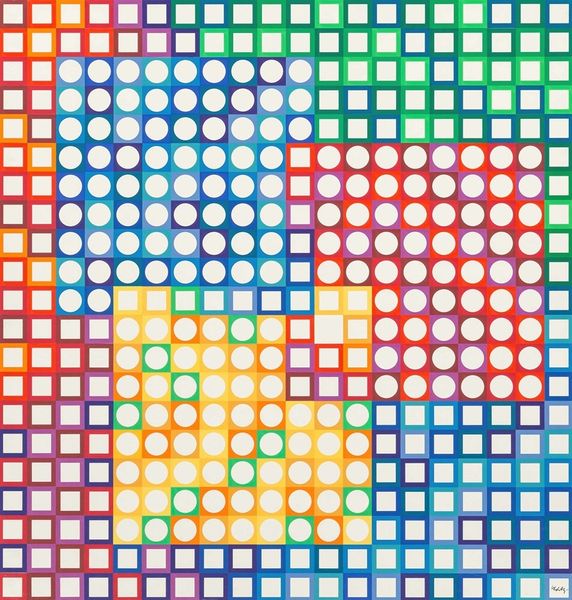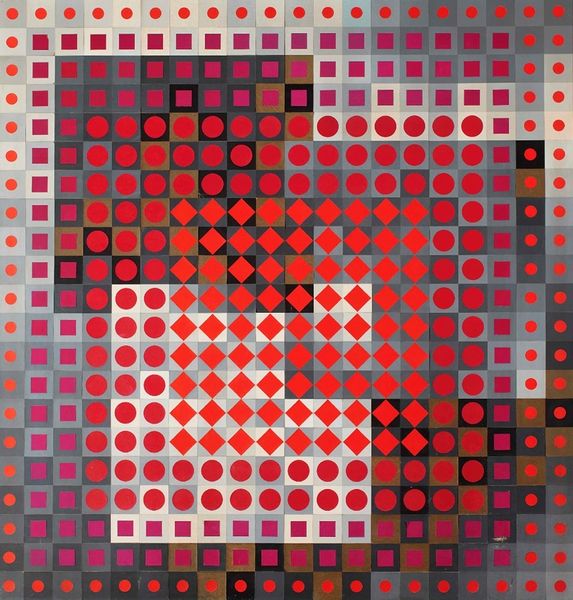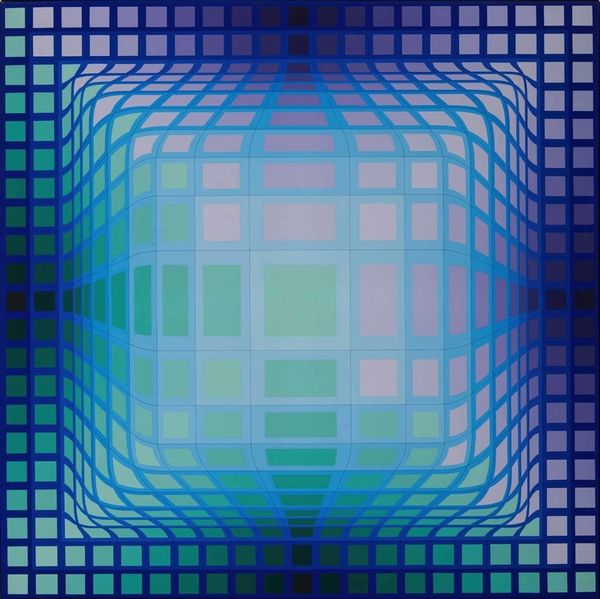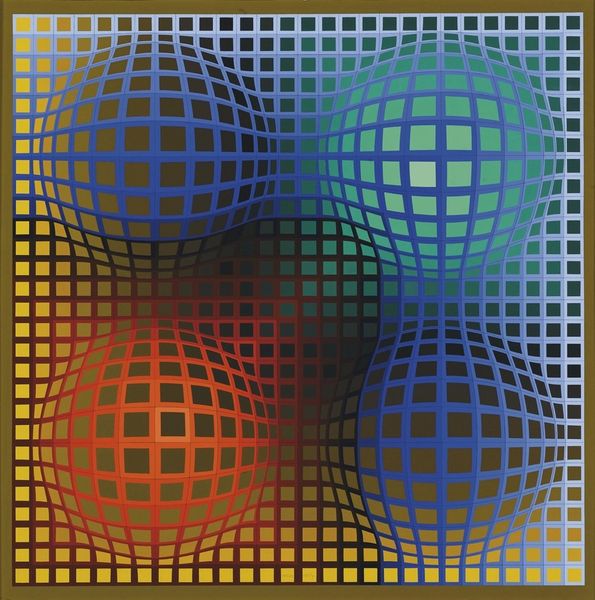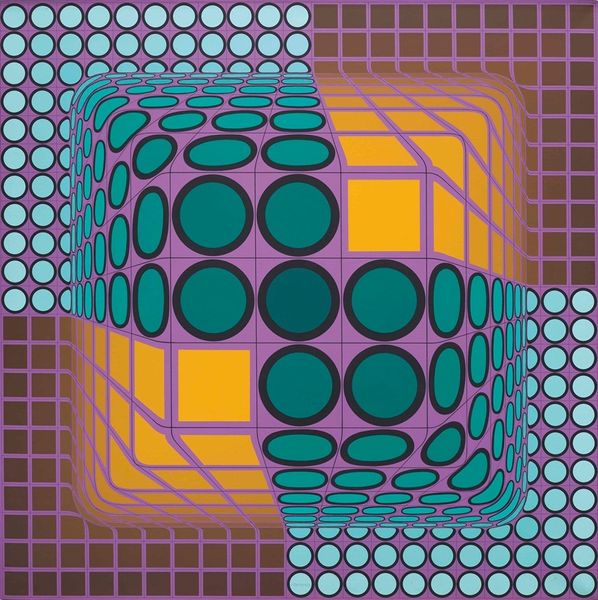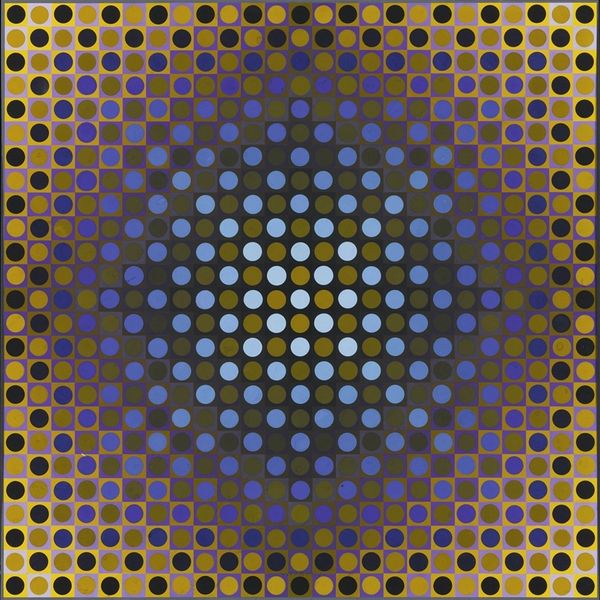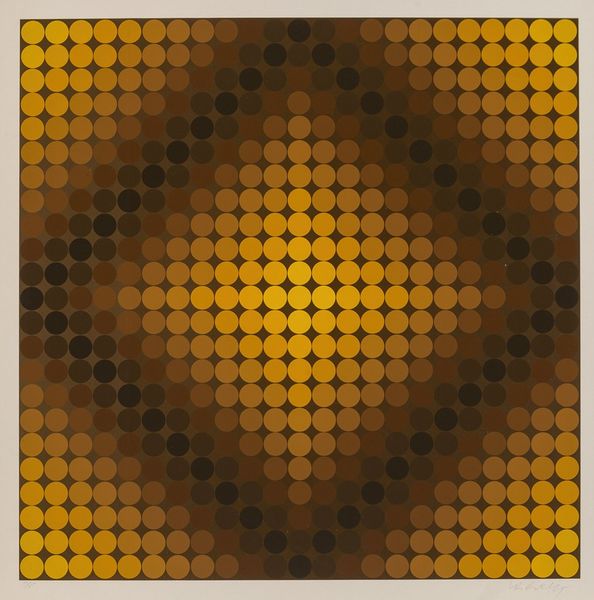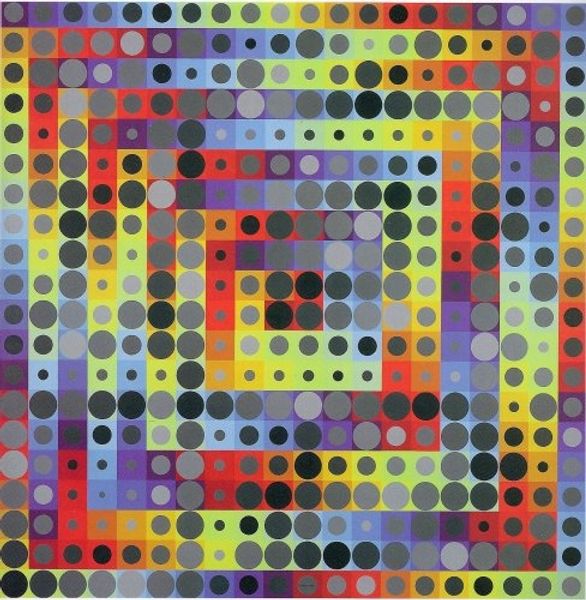
acrylic-paint
#
random pattern
#
op-art
#
pattern
#
acrylic-paint
#
abstract
#
geometric pattern
#
abstract pattern
#
minimal pattern
#
organic pattern
#
geometric
#
repetition of pattern
#
vertical pattern
#
abstraction
#
pattern repetition
#
layered pattern
#
modernism
Copyright: Modern Artists: Artvee
Curator: This acrylic on canvas is entitled "Blitz" and was created by Victor Vasarely in 1972. Editor: Immediately striking, isn't it? There's a pulsating quality, almost as if the colors are vibrating on the canvas. It’s incredibly vivid. Curator: That "vibrating" quality is precisely what Vasarely, a key figure in Op Art, aimed to achieve. He uses the systematic arrangement of color and form to trick the eye and create an illusion of movement. Notice how each circle subtly shifts in hue, producing a spatial ambiguity that actively engages the viewer. Editor: Yes, and while visually captivating, I can't help but wonder about its social context. The early 70s were a turbulent period of change and anxiety; a lot of revolutionary fervor, too. Could this almost clinical abstraction also reflect the era's increasing industrialization and the anxieties it created around individuality and uniformity? Curator: That's an interesting viewpoint, considering Op Art's widespread popularity during that time. However, Vasarely, drawing from the Bauhaus tradition, might also intend to celebrate industrial precision through abstraction, transforming technology into an aesthetic force. Editor: I concede the visual celebration of the technological. And thinking further, the piece feels deliberately democratic and accessible; its effect relying not on rarefied art-historical knowledge, but on basic perception available to anyone. It's an art for the masses in a sense, divorcing itself from older power structures inherent to the gallery system and fine art markets. Curator: A relevant point. However, analyzing it on purely formal terms reveals even further intentionality. Consider the relationship between color and scale. Note how he achieves the effect of three-dimensionality by altering the perceived size of forms. Scale doesn't simply represent depth, but establishes depth; almost like coded signifiers. Editor: I remain intrigued by the potential influence of that time. Ultimately, I view "Blitz" as less a universal celebration of form and more as an encoded, albeit ambivalent, response to an era of rapid technological transformation. Curator: Regardless, its sustained visual intrigue is testament to the enduring appeal of his sophisticated visual language.
Comments
No comments
Be the first to comment and join the conversation on the ultimate creative platform.
